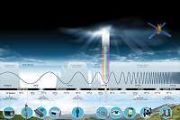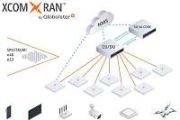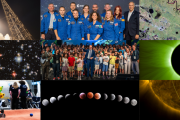
Copernical Team
SpaceX defends airspace safety ahead of Florida Starship launch plans
Verifying that you are not a bot
Meet NASA's Artemis Closeout Crew, tasked with securing astronauts in their spacecraft
Verifying that you are not a bot
Russia's plans for a space station include 'recycling' its ISS modules
Verifying that you are not a bot
Engineering the first reusable launchpads on the moon
Verifying that you are not a bot
NASA's wideband technology demo proves space missions are free to roam
Verifying that you are not a bot
Japan's new flagship H3 rocket fails to put geolocation satellite into orbit
Verifying that you are not a bot
Year in images 2025

Year in images 2025
Our year through the lens: a selection of our favourite images for 2025
Euclid’s galaxy garland
 Image:
Euclid image of galaxy NGC 646
Image:
Euclid image of galaxy NGC 646 PUNCH mission delivers sweeping new view of solar activity
 After less than a year in orbit, NASA's Polarimeter to Unify the Corona and Heliosphere (PUNCH) mission, built and led by Southwest Research Institute, is returning wide-field images that place the Sun's activity in the broader context of the inner solar system while tracking comets and major space weather events as they move outward from the Sun.
SwRI's Dr. Craig DeForest outlined the mis
After less than a year in orbit, NASA's Polarimeter to Unify the Corona and Heliosphere (PUNCH) mission, built and led by Southwest Research Institute, is returning wide-field images that place the Sun's activity in the broader context of the inner solar system while tracking comets and major space weather events as they move outward from the Sun.
SwRI's Dr. Craig DeForest outlined the mis Eutelsat Network Solutions to lead global rollout of Intellian OW7MP manpack SATCOM terminal
 Eutelsat Network Solutions and Intellian Technologies have entered a strategic partnership under which Eutelsat Network Solutions will manage the global launch and availability of Intellian Technologies' OW7MP Manpack satellite communications user terminal on the Eutelsat OneWeb low Earth orbit network.
Eutelsat Network Solutions is a wholly owned independent U.S. proxy company and subsidi
Eutelsat Network Solutions and Intellian Technologies have entered a strategic partnership under which Eutelsat Network Solutions will manage the global launch and availability of Intellian Technologies' OW7MP Manpack satellite communications user terminal on the Eutelsat OneWeb low Earth orbit network.
Eutelsat Network Solutions is a wholly owned independent U.S. proxy company and subsidi 





























